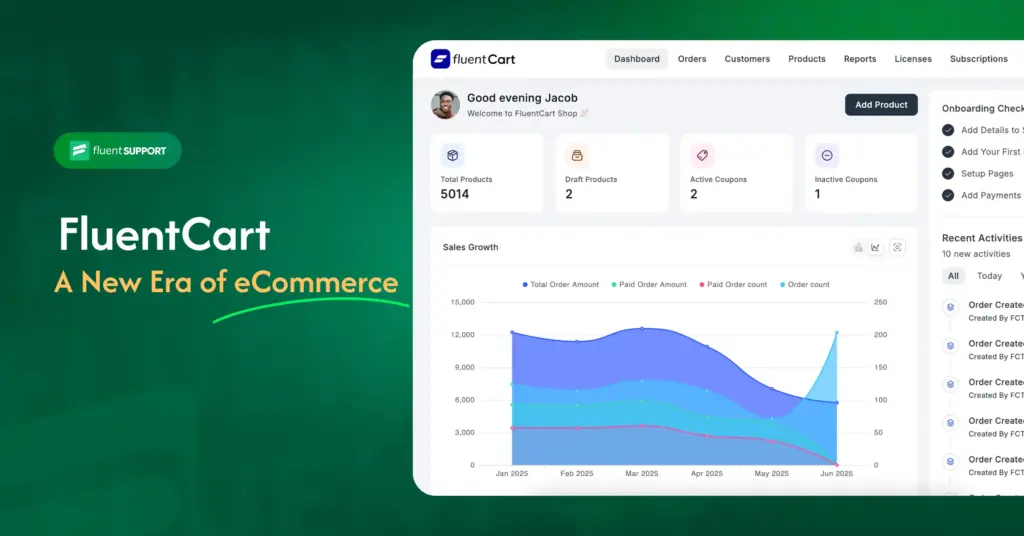
What is Customer Experience & Why It’s Important? (And How to Measure It)
The best customer is the one who promotes your business without expecting any returns.
Every business goes to extra lengths for that customer. Companies are investing big money to create and improve their customer experience. No one wants unhappy customers to share their frustration on social media about their bad customer experience.
A happy customer is more likely to become a loyal customer. Only a positive customer experience can make a customer happy.
But what is customer experience? How can any business with limited resources provide a great customer experience for its customers? How can they balance the pressure of customers’ expectations and other business goals while doing this?
In this blog, we will cover the definition of customer experience, why it is important for your business, the difference between good & bad consumer experience, and how you can measure customer experience to increase your revenue.
What is customer experience?
Customer experience (CX) is everything about how a customer feels about your brand, products, and business.
The main ingredients of customer experience are products and people. It focuses on the relationship between your business and your customers. No matter how small or big the interactions are, everything is included in the CX.
When a customer views your advertisement, reads your website copy, emails, or other text from you, contacts your support for help, or calls, these customer contacts are what we call customer experience. How customers view these interactions defines your business customer experience. Every exchange between customer and business creates great (sometimes bad) long-lasting relationships. The deeper the relationship goes, the more the brand gets customer loyalty.
Customer experience happens in these ways-
- Customer perception about your brands before they buy anything
- Their sales experience when they buy your product
- The quality of your products or service
- Customer support or service experience after purchase
A great customer experience is a key factor for a business’s success.
Proactive Support made Simple
Know what your customers need before they do!
Importance of customer experience
Customer experience directly influences 3 business metrics:
- Customer retention
- Customers lifetime value
- Customers loyalty toward your brand
In a competitive market, connecting with customers and retaining them is more challenging than ever. Excellent customer experience can help you sustain and accelerate growth. It also promotes brand advocacy and increases loyalty among your user base.
Present-day, the internet favors customers hugely. Now anyone can share their experience with millions of people through one Facebook post, tweet, youtube video, or a viral TikTok. Virality can amplify anything, from a great interaction with brands to a bad customer experience. One bad experience goes viral and puts a wrong impression on your brand reputation.
Now customers crave personal connections with brands. You can quickly lose to your rivals who understand client experience if you are not focused. Customers have unlimited options and one click away to choose; they want more than quality products or services. If they try to reach your customer service or support and can’t get in touch or face a bad experience, they will not hesitate to turn to your competitors.

A great customer experience will increase customer satisfaction, positive reviews, and organic growth through word-of-mouth marketing. But how can a brand provide an amazing customer experience to its customers?
First, get a clear picture of good & bad customer experiences.
What is a great customer experience?
What makes a customer interaction a good customer experience? You should make it easy for your customers to do business with you. How can you make it a great customer experience? Make it seamless for customers to do what they want to do with your products and services.
Every positive customer experience has these elements which make every interaction great:
- Your products or services serve quality instead of just a cheap market alternative. Quality always wins. If it can’t fulfill customer needs, then the whole experience will be crushed. Your product design should be intuitive. Your service benefits should be appealing and valuable if you are offering services.
- Your marketing is realistic, aligning with customers perceptions. Every business should have realistic expectations about its products.
- Your self-service tools are available online. Make them searchable and resourceful. Help your customers to help themselves quickly access your knowledge base, documentation, and guides.
- Focus on proactive support. Identify issues before customers face them and provide solutions before they ask.
- Your pricing is visible in every sales copy, website, or cart. Transparent sales are the best way to influence buying intended customers.
- All your teams are in the loop in every customer interaction and can quickly access information about any customers in real time. It helps your teams avoid conflict and reduce customer frustration over repeating the same information to different persons for every inquiry.
- Customer support is the center of attention for your business. It is the central part of the company, and every team plays the part of the support team. Everyone is aware of customer experience in every user’s onboarding process & makes sure customer needs are taken care of.

What is a bad customer experience?
Bad customer experience happens when a customer faces a problem onboarding to your business. Then, if they can’t reach your support for help, it will be an even more frustrating experience for them. Bad customer experience happens from poor customer service. We wrote about thirteen bad customer service examples in our previous blog. Here are a few reasons make most of the bad customer experiences:
- Long wait times over the phone and many agents-to-agent touchpoints.
- Employees without proper understanding of customers problems.
- Overused automation without human contact points.
- Not enough coordination among teams makes customers repeat information every time they connect with different persons.
- No visible contact option on your website or brochure.
- Ignores customer complaints and never reaches them for solutions. Do not take customer feedback seriously.
- Rude employees and no empathy for service.
- No personalization on customer support. People feel like talking to bots.

How to measure customer experience?
Customer experience can make you stand apart from your competitors. But to achieve great customer service, you have to measure and analyze ongoing customer experience to the teeth continuously.
There are no tangible ways or frameworks to measure and analyze consumer experience. Every industry is different, and its customer demographics are too. You have to deep dive into data, analyze little pieces, and run numerous experiments on the go.
Here are some ways you can start your customer experience by measuring and analyzing:
1. Run customer satisfaction surveys
Start your measuring experiment by collecting data directly from your customers. Run customer satisfaction surveys right after closing a support ticket or call. You should get a clear insight into your customer satisfaction score (CSAT) and Net Promoter Score (NPS).
CSAT will give you an understanding of customer satisfaction through different touch points. NPS will give you an insight into customer perception about your brand and how likely they will recommend it to their connections. It will help you decide your future steps. You can use the data to follow up with customers later time.
2. Calculate customer lifetime value
How much a customer spends money with your business is an important metric you should always calculate. We wrote about customer LTV in our latest blog. Read it; you’ll learn why it is vital for your business and how you can calculate your customers lifetime value.
3. Analyze your churn rates
Churn rates tell you how many customers you lose in a certain period. If your churn rate is higher, something terrible happens with the customer experience. Keep an eye on your churn rates. Learn what causes churn rates and how you can reduce it.
4. Learn more about customer effort score (CES)
CES is a customer service metric, and it tells you how many touchpoints a customer has to face to resolve an issue. It gives you insight into your support system and how you can make it fast for customers to reach suitable people for solutions.
5. Use community forum for customer feedback
Community forums can be a great resource for businesses to collect customer feedback. You can access everything from feature requests to customer’s pain points, support problems, and organic customers suggestions about your product/service. You can use the community forum as your focus group to test new changes and get feedback instantly.
6. Time to resolution (TTR)
TTR gives you insight into the time needed for your customer support team to resolve a customer issue or close tickets. Find out how much time a customer needs to wait for an answer from your agents. Measure the average time. Most customer frustrations happen over long wait times. The shorter your TTR time, the more remarkable will be the customer experience.
7. Analyze Support data
Customer support data can be used to measure and analyze CX further. If recurring issues regularly come through tickets, you should review the problems and provide solutions immediately. It will save time for both your support agents and customers. A streamlined process will decrease support tickets and provide an excellent client experience.
Conclusion
Companies are now investing a lot in great consumer experience. In today’s world consumers hold more power than the sellers. Client experience revolves around how your business interacts with them, how fast you’re solving their problems and how easy it is to onboard with your product or service.
Measure customer experience by collecting customer feedback, running customer surveys & gathering customer support data, and analyzing it. It is a never-ending process. You have to keep analyzing and improving customer experience every day. Because one bad customer experience can affect your brand image. Investing time and money in a good CX experience will attract loyal customers in the long term, thus increasing revenue.
Your own Support Portal in 5 minutes!
Start off with a powerful ticketing system that delivers smooth team collaboration and powerful integrations.












Leave a Reply